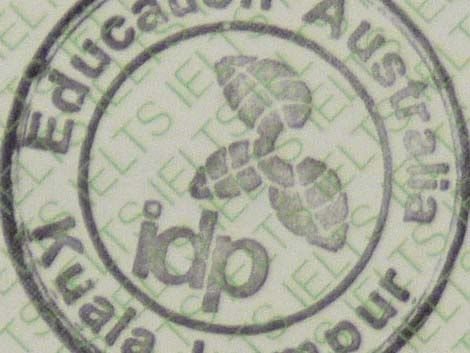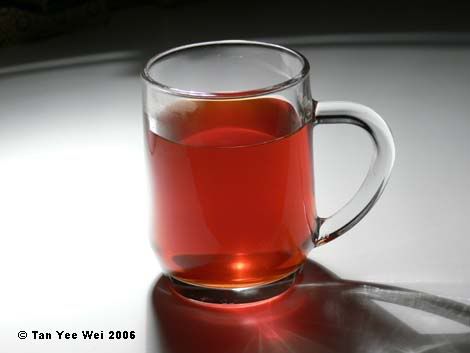Contents:Introduction
Summary of results
Experimental data gathering procedures
Data processing
Data accuracy
Other sources of errors
Conclusions and recommendations
Introduction:The Panasonic DMC-FZ30 is a 'prosumer' digital still camera with a 'superzoom' lens assembly capable of 12x optical zoom.
The minimum distance required to achieve focus of the subject changes with focal length (zoom) in an extremely non-linear fashion. This experiment attempts to illustrate this non-linear behaviour.
The aim of this project is to help reduce barrel distortion while taking macro photographs. In the case of the FZ30, barrel distortion is a serious issue at the widest zoom.
Summary of results:The following graph shows the minimum distance required to achieve focus at various focal lengths (35mm equivalent).
The distance measured is the distance from the subject to the front the lens barrel.
The focal length can be converted to optical zoom by dividing the length by 35, such that 35mm is 1x zoom and 420mm is 12x zoom. However, this is unnecessary since the camera’s zoom controls are calibrated to 35mm equivalent.

The following graph shows the maximum magnification factor at various focal lengths, again scaled for 35mm format.
Actual magnification factor correlates the size of the image on the film/sensor and the size of the subject. Hence, if the image of a 25mm subject appears as a 5mm image on film, the magnification factor is 5/25, or 0.20.
Here, the magnification factor is scaled to 35mm, so that an image that spans half the frame is treated as 18mm, not half of 7.417mm (the actual sensor width).
 Experimental data gathering procedures:
Experimental data gathering procedures:The subject, an AU$20 note, is pasted on a vertical surface and illuminated with a halogen lamp.
A tape measure is laid out along the floor, with its zero point directly below the subject.
The camera is mounted on a tripod, and the tripod’s central column used as a reference point from which distances are measured.
The camera is positioned so that its lens barrel is just touching the subject. The central column’s position along the tape measure is then measured. This is the zero-point measurement, and subsequent data will be adjusted to reflect the fact that the measured distance is not the distance from the subject to the lens.
The camera is set to its minimum focal length (35mm), and its position along the tape measure adjusted back and forth until its minimum focal distance is found. The distance along the tape is recorded. The approximate (35mm equiv.) focal length as indicated on the lens barrel is recorded.
The camera’s focal length is changed incrementally, and the new minimum focal distances and focal lengths recorded.

Camera removed from tripod to shoot this sceneData processing:For a more precise approximation of the camera’s focal length (zoom), the image files’ details were checked by selecting ‘properties’, ‘summary’, ‘advanced’, ‘focal length’. This focal length is given in integers with no decimal places.
To obtain the magnification factor, a standard length on the subject must be known. The horizontal distance of the base of the ‘2’ was measured, and found to be exactly 12mm.
The distance (in pixels) of the corresponding length scale on each image was measured using Adobe Photoshop’s measure tool.
The ratio of the distance to the width of the frame was then multiplied by 35mm to achieve the image size that a 35mm film would see if the same image was to be produced on film.
Data accuracy:Distance measurements: +/- 3mm; <5%
Focal length (35 mm equiv. as estimated on camera): +/- 5mm; <10%
Focal length (actual, as displayed on computer): +/- 0.5mm; <7%
Standard length of the subject, actual distance: +/- 0.2mm; <2%
Standard length of the subject, measured from images: +/- 3 pix; <2%
Other sources of error:The camera’s auto focus algorithm exhibited slight inconsistencies when performing at the performance limits of the lenses, particularly at the far end of the focal lengths greater than 190mm (6x zoom). Occasionally, what appears to be an unsuccessful focus can be rectified by moving the camera backwards by about 3mm, focusing, then advancing the camera forward to its original position and auto focusing again. The outlier at 330 mm is probably due to this problem.
Conclusion and recommendations:The magnification factor has two distinct peaks at 35mm and about 115mm. At 35mm, the magnification factor is approximately 0.62 (scaled to 35mm film), and at 115mm, the magnification factor is slightly over 0.40.
Barrel distortion is a serious concern in the range of about 35 to 45mm, and if a magnification factor of 0.6 is not required, the best magnification would occur at 115mm, with faithful geometric representation.
The following images show the results at various focal lengths. Compare the amount of distortion found in the 2nd and 3rd images (38mm and 113mm).

Focal length: 35mm (1.0x)
Magnification factor: 0.62

Focal length: 38mm (1.1x)
Magnification factor: 0.37

Focal length: 113mm (3.2x)
Magnification factor: 0.37

Focal length: 420mm (12x)
Magnification factor: 0.22
In light of the above results, I would suggest that one works in the 115mm focal length unless there is a real need for the 0.62 magnification factor.
If a high magnification, low resolution shot is required, I recomend shooting the same scene using 115mm on high resolution, then cropping the image to get the desired framing. This would give excellent geometric reproduction since 115mm causes little barrel distortion, and the centre of the frame suffers even less from distortions.
PhotographyMathematics & Applied SciencesLabels: photographic equipment, photography












































